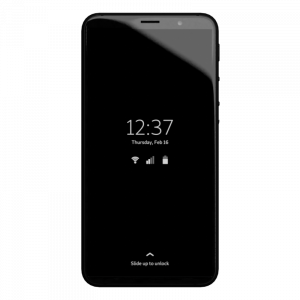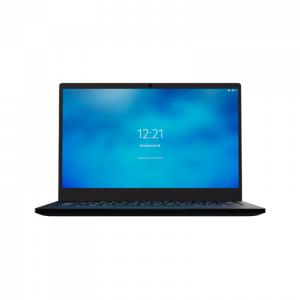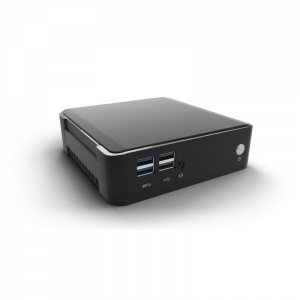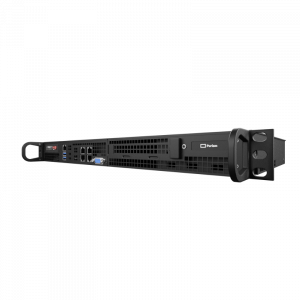Purpose-Built Smartphones for Government vs. Commercial Off-The-Shelf Devices
Randy Siegel
Latest posts by Randy Siegel (see all)
- Freedom of Choice vs. Oppression of Big Tech - November 6, 2024
- The Case for Free/Libre and Open-Source Software: Enhancing Security and Privacy in the Digital Age - October 22, 2024
- RIP RSA AES: The Immediate Need of Quantum-Resistant Cryptography - October 22, 2024
The rise of the smartphone as both an indispensable consumer electronic device and an omnipresent tool for performing tasks at work has led to an inevitable question: Should enterprise and government centralized IT organizations deploy Commercial Off-the-Shelf (COTS) devices such as the iPhone, Google Pixel, Samsung Galaxy and attempt to secure them, or should organizations mandate purpose-built, work-dedicated devices where security is the default?
Early Days: The Rise of Rugged Devices
Assuming that the smartphone era can be traced back to the late 1990’s with RIM’s Blackberry device, the second wave of devices featured many hardened & ruggedized form factors created with ‘work’ squarely in mind.
Original Equipment Manufacturers (OEMs) including Symbol, Honeywell, Intermec, Dolphin, and others concentrated on producing hardened mobile devices (many of which also had cellular and Wi-Fi modems built-in) designed to withstand harsh environments and provide advanced functionality for tracking and identification purposes. These devices typically featured:
- Durability: With high IP ratings for dust and water resistance, and military-standard testing for durability, ruggedized phones are built to last and survive against the elements.
- RFID Technology: They came equipped with Radio-Frequency Identification (RFID) technology, which allowed for wireless communication with RFID tags to track inventory, manage assets, or control access.
- Specialized Features: Many ruggedized smartphones also include additional features such as infrared cameras, sound level meters, and volatile organic compound (VOC) detectors, making them suitable for a variety of industrial and outdoor work scenarios.
These ruggedized devices were and still are (see the success of Zebra Technologies, Honeywell, Getac, etc.) are ideal for field work or outdoor adventures, as they can withstand extreme temperatures, drops, and harsh environmental conditions. They are particularly useful in industries where tracking and managing resources efficiently and reliably is crucial. The integration of RFID technology in a ruggedized form factor ensures that these devices can perform in demanding situations where typical smartphones might fail.
- The proliferation of ‘work-first,’ ruggedized form-factors certainly had a bearing on the acceleration and general adoption of smartphones within enterprise environments. It can be argued that many of the factory, warehouse and inventory management staff were first exposed to smartphone or smartphone-like devices from work. These individuals quickly understood their power to help in more mundane tasks such as Personal Information Management (PIM) which was the first “killer app” of the smartphone.
Devices Issued by Centralized IT
One can argue that PIM was the early “killer app,” and main driver for white-collar smartphone knowledge workers. Line of Business (LOB) tasks were among the first drivers affecting blue-collar, task workers.
Centralized IT played an outsized role in terms of enablement for both types of devices and their associated user groups.
In fact, traditional, centralized IT in large enterprises and government organizations made virtually all of the initial procurement decisions of both smartphone devices –COTS and Ruggedized.
Government Furnished Equipment (GFE)
I was fortunate enough to work with farsighted individuals across government and Industry who immediately understood the power of having a mobile device in hand to perform both their job functions as well as to help them in their everyday lives.
Some of the earliest Line of Business (LOB) work was done on the RIM platform. I recall when a certain field agent from the FBI performed on-site NCIS lookups as well as advanced correlation and situational awareness applications by querying remote databases. Soon after, I was involved with applications ranging from the US Postal Service’s Surface Visibility initiatives to the US Census 2010 Enumerator Effort, to US Federal Air Marshals use-cases, and multiple Intelligence Community (IC) and Department of Defense (DoD) seminal smartphone trials and deployments.
I posit that the widespread use of Microsoft Corporations’ tools and technologies across US Government, greatly accelerated the adoption of smartphone usage in this population. Email and PIM were the “killer apps”, and Microsoft’s Exchange email server and associated Exchange Active Sync (EAS) protocol was widely depended upon by government in day-to-day operations.
(It should be pointed out that in early days, RIM did an exceedingly good job of getting into the various federal data centers and setting up their NOC-relay technology/BES servers behind the DMZ. To this day, Blackberry owns important IP and effectively morphed into more of a software/cyber pure play. They still have a robust government presence and some of the more experienced and skilled employees.)
Government Furnished Equipment (GFE) refers to equipment that is owned by the government and provided to employees & contractors for use in fulfilling government missions and/or contracts. In the context of smartphones, GFE would be specialized devices supplied by the government to meet particular requirements of a contract or workforce duty, such as secure communication or ruggedized features for field operations.
Comparison with COTS Equipment:
GFE Smartphones:
- Tailored for Specific Missions: GFE smartphones are designed to meet the exact needs of a government contract, which may include enhanced security features, durability, and specific communication capabilities.
- Controlled Supply Chain: The government can ensure that the supply chain for GFE is secure, reducing the risk of tampering or unauthorized access.
- Maintenance and Support: GFE comes with government-managed maintenance and support, which can be crucial for mission-critical applications.
COTS Smartphones:
- Broader Availability: COTS devices are readily available and can be quickly deployed without the need for a lengthy development process.
- Cost-Effective: COTS devices may be more cost-effective upfront due to economies of scale in their production.
- Flexibility: COTS smartphones offer a wide range of applications and services that can be beneficial for general-purpose use.
However, COTS devices may not always meet the stringent requirements of government mission goals and contracts, especially when it comes to security and specialized functionality. This is where GFE smartphones have an advantage, as they are purpose-built to comply with government standards and operational needs.
Made In USA Electronics and Secure Supply Chain
Purism is a nimble, US-based OEM. As such, the company can provide both COTS solutions out of the box for sale, and more tailored, GFE-specific solutions based on specific mission requirements.
The Liberty Phone showcases Purism’s ability to manufacture COTS devices made in the USA. Our secure supply and manufacturing process is based in Carlsbad CA where we have the ability to add tamper detection, built-in smartcard (CAC/PIV) reader and/or derived DOD PKI certs, ensure hardware component separation and isolation, feature physical, hardware kill switches, provide the ability to inject cryptographic keys, add/tune radios for air interface agnosticism, and much more!
In fact, unlike other OEMs, Purism will share everything from schematics on up, which allows for a single source to manufacture custom GFE devices with ease. In tailored, GFE approaches, the government will own their own IP.
Based on government supplied specifications, Purism can produce made in the USA, tailored componentry for GFE devices ranging from simple heads-up or chest worn screens optimized for Common Operational Picture and Situational Awareness applications, to more robust field and white-collar knowledge worker use cases.
Since Purism lacks the overhead costs of large OEMs who have to sell millions of devices to break even, the government and taxpayers are provided with a more flexible and cost-effective solution. A solution that is by design more secure because the supply chain is more secure.

Purism Products and Availability Chart
| Model | Status | Lead Time | ||
|---|---|---|---|---|
 | Librem Key (Made in USA) | In Stock ($59+) | 10 business days | |
 | Liberty Phone (Made in USA Electronics) | In Stock ($1,999+) 4GB/128GB | Shipping before Friday December 19th, 2025 | |
 | Librem 5 | In Stock ($799+) 3GB/32GB | Shipping before Friday December 19th, 2025 | |
 | Librem 11 | In Stock ($999+) 8GB/1TB | 10 business days | |
 | Librem 14 | Out of stock | New Version in Development | |
 | Librem Mini | Out of stock | New Version in Development | |
 | Librem Server | In Stock ($2,999+) | 45 business days | |
 | Librem PQC Encryptor | Available Now, contact sales@puri.sm | 90 business days | |
 | Librem PQC Comms Server | Available Now, contact sales@puri.sm | 90 business days |
Recent Posts
Related Content
- 2025 Year-End Sale
- Purism Liberty Phone Exists vs. Delayed T1 Phone
- Landfall: A Case Study in Commercial Spyware
- EvilAI Malware Exploits AI Targets Organizations Worldwide
- Sound Recorder App Now Available


